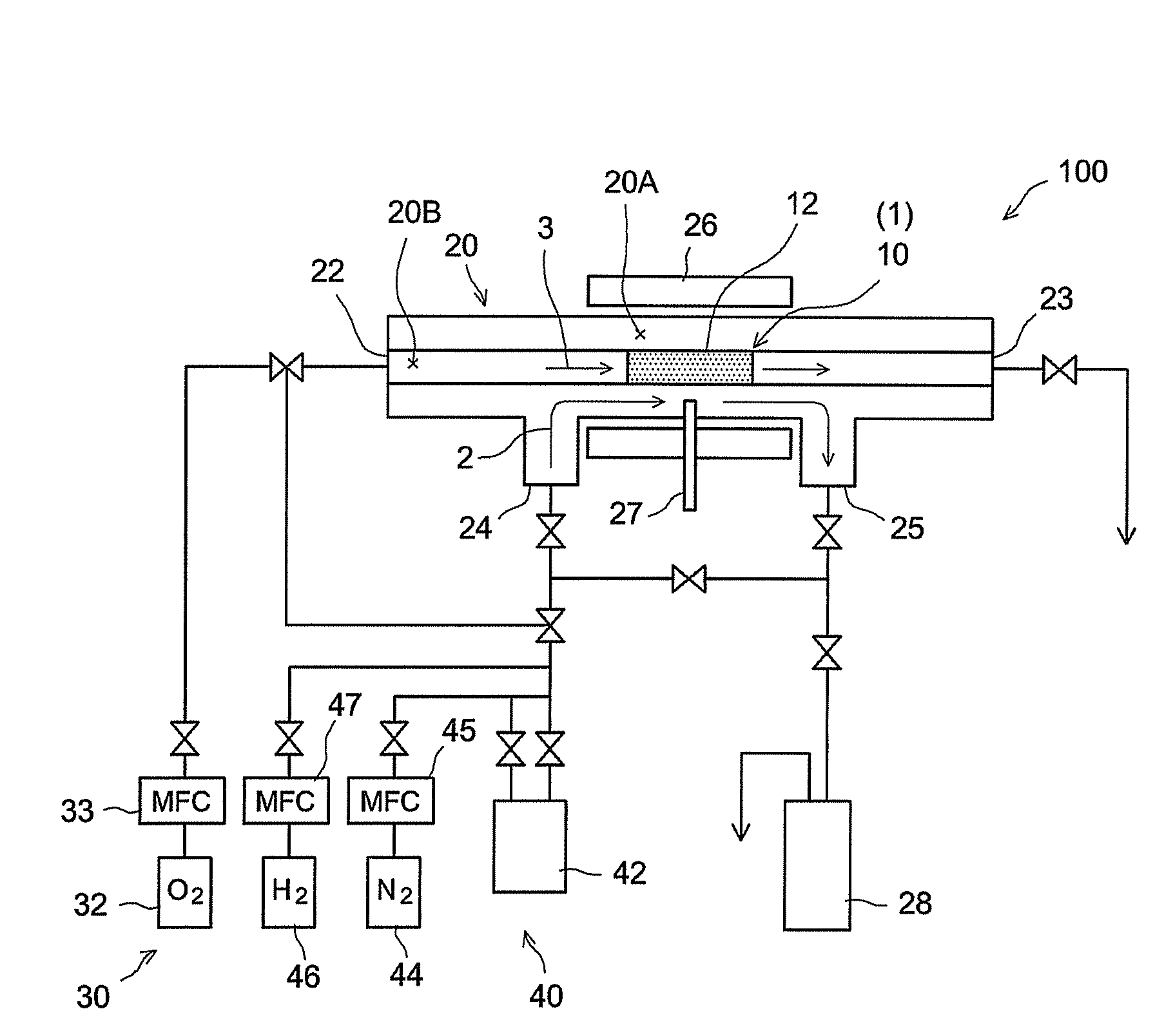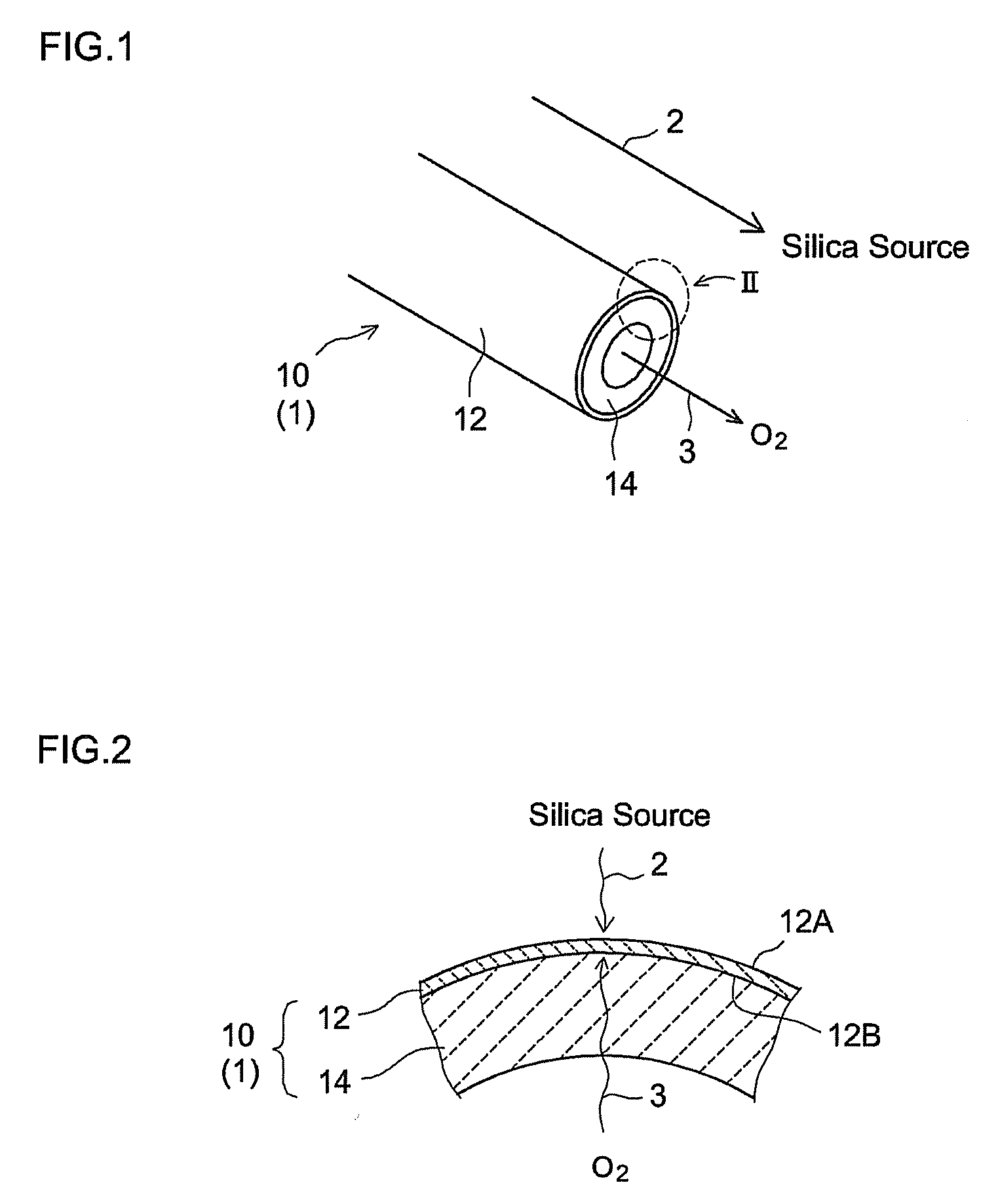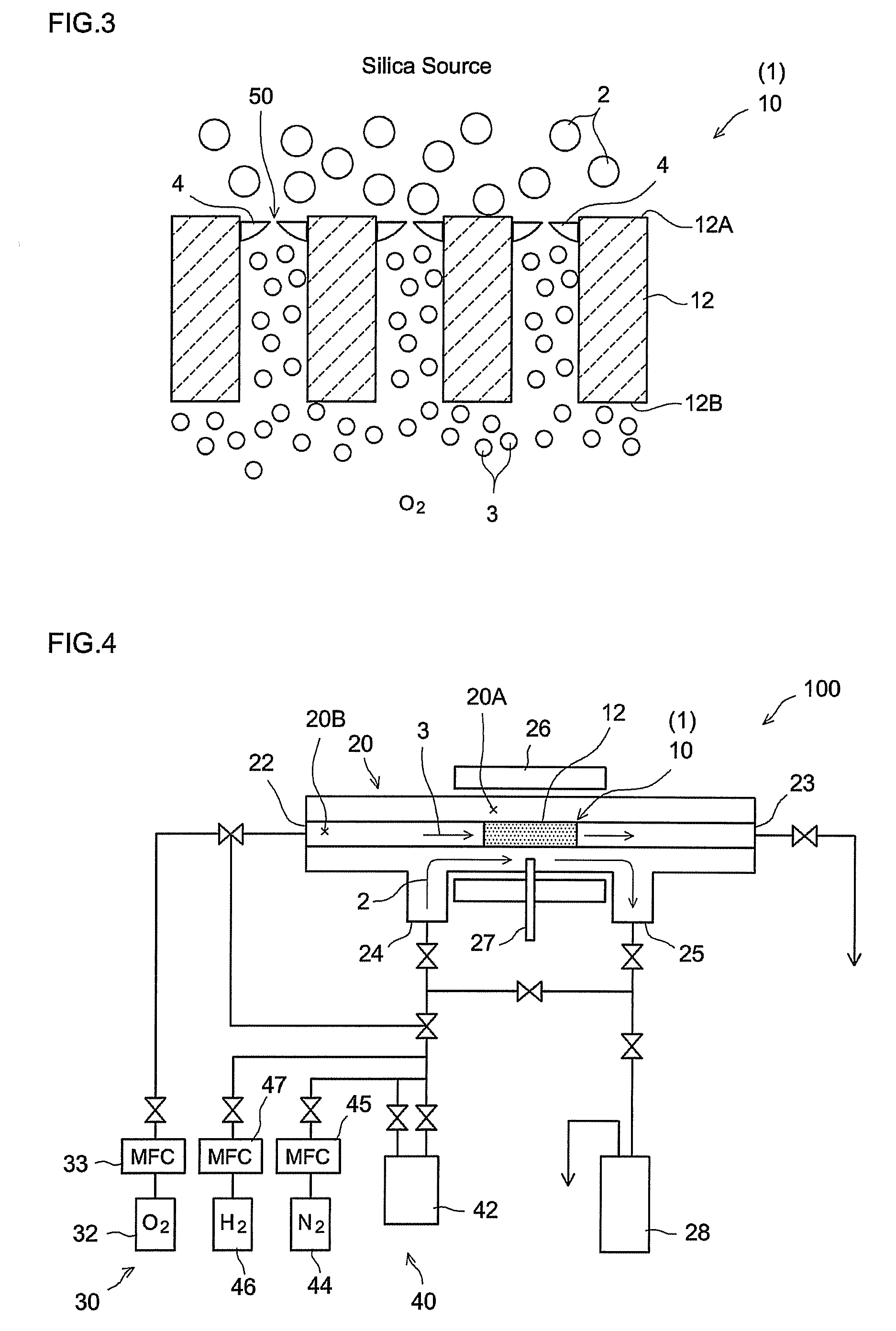Method for producing hydrogen gas separation material
- Summary
- Abstract
- Description
- Claims
- Application Information
AI Technical Summary
Benefits of technology
Problems solved by technology
Method used
Image
Examples
example 1
[0058]A hydrogen gas separator having the structure schematically illustrated in FIG. 1 was produced by the procedures given in FIG. 5. That is, α-alumina powder with a mean particle diameter of about 1 μm was kneaded along with water and an organic binder to prepare an extrusion molding paste. The paste was molded using a commercially available extruder, was dried, and was then fired in the atmosphere, to prepare a porous support 14 (α-alumina support) in a tubular shape (with outside diameter of 10 mm, inside diameter of 7 mm, and length of 50 mm) (step S10). The mean pore diameter of the support 14, as determined by general mercury penetration, was about 150 nm.
[0059]A porous film (porous substrate) 12 was then formed on the surface of the resulting a-alumina support 14 (step S20). In particular, a boehmite sol was produced through the hydrolysis of aluminum isopropoxide and acid peptization. The α-alumina support 14 (both ends of the tube were temporarily blocked so as to preven...
example 2
[0067]In this example, the reaction time (silica coat-producing time) during counter diffusion CVD was changed to 30 minutes. The hydrogen gas separator of Example 2 was in all other respects produced in the same manner as in Example 1.
[0068]The hydrogen gas separator was evaluated in the same manner as in Example 1. However, in this example, the hydrogen gas permeation activation energy was determined from an Arrhenius plot of the H2 permeability at 300° C., 500° C., and 600° C. The results are summarized in Table 2 along with an outline of the method of production and the structure of the hydrogen gas separator.
TABLE 2Example 2Porous substrate sintering temperature600° C.Silica sourceHMDSReaction temperature600° C.Reaction time30 minH2 permeation activation energy [kJ / mol]5.5H2 permeability (600° C.)7.3 × 10−7[mol / m2 · s · Pa]Permeability coefficient ratio (H2 / N2)2.8 × 102
[0069]Table 2 shows that the activation energy, H2 permeability, and permeability coefficient ratio of the hyd...
example 3
[0070]A γ-alumina porous film (γ-alumina film) 12 was formed on the outer peripheral surface of an α-alumina support 14 in the same manner as in Example 1 except that the γ-alumina film (porous substrate) sintering temperature was changed to 800° C. The γ-alumina film 12 was about 2 μm thick, with a peak pore diameter of 8 nm to 10 nm, as determined by common nitrogen absorption. The γ-alumina film 12 obtained as a result of the firing process at 800° C. is sometimes referred to below as “γ-alumina substrate (800° C.)”. The hydrogen gas separator of Example 3 was produced by carrying out counter diffusion CVD in the same manner as in Example 1 except for the use of the γ-alumina substrate (800° C.) instead of the γ-alumina substrate (600° C.). The hydrogen gas separator so obtained was evaluated in the same manner as in Example 1. The results are summarized in Table 3 along with an outline of the method of production and the structure of the hydrogen gas separator.
TABLE 3Example 3Po...
PUM
| Property | Measurement | Unit |
|---|---|---|
| Temperature | aaaaa | aaaaa |
| Temperature | aaaaa | aaaaa |
| Pore size | aaaaa | aaaaa |
Abstract
Description
Claims
Application Information
 Login to View More
Login to View More - R&D
- Intellectual Property
- Life Sciences
- Materials
- Tech Scout
- Unparalleled Data Quality
- Higher Quality Content
- 60% Fewer Hallucinations
Browse by: Latest US Patents, China's latest patents, Technical Efficacy Thesaurus, Application Domain, Technology Topic, Popular Technical Reports.
© 2025 PatSnap. All rights reserved.Legal|Privacy policy|Modern Slavery Act Transparency Statement|Sitemap|About US| Contact US: help@patsnap.com



